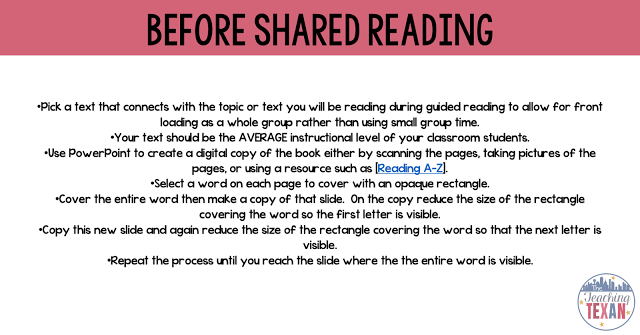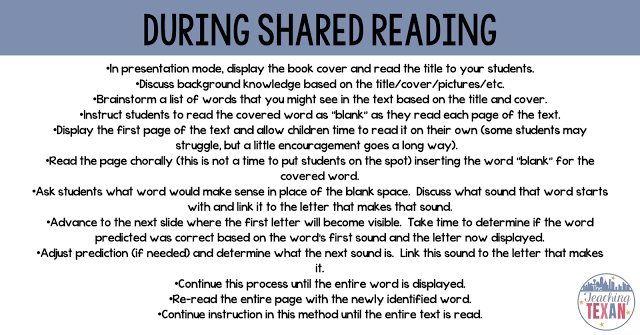Why Guided Reading is Holding Your Students Back
Guided reading should have a permanent home in your classroom.
Yet do you still feel like you’re the one doing all of the work during your small group instruction? (I used to). Do you feel like the skills you’ve worked on just aren’t transferring for some students? (I used to). Do you feel as if the dots are just not connecting? (I used to, and to be honest, sometimes still do).I’ve made it a focus lately to connect guided reading instruction with whole group instruction through the use of shared reading. After just a few short weeks of incorporating more intentional shared reading into my instruction I am already noticing improvement in literacy development!
Shared reading will boost confidence, comprehension, and word attack strategies.
Here’s how we start to return the onus of work to our students in the effort to help them meet and then exceed our expectations.
Alternatively you can cover words in a big book with sticky notes, but I prefer the ease of using a PowerPoint to reveal one letter at a time (read below). The words you choose to cover will vary depending on your students and their needs, but the slides should look something like the ones below.
What’s next? Move into guided reading confident that your students have already built a solid background on the topic they will read about. Spend less time front loading and more time reading in small groups with your assistance provided as needed. Take a deep breath. You’ve taken the first step towards guiding your students towards more independence, confidence, and accuracy while reading!
Do you have tips to share related to guided reading? I’d love if you posted them in the comments below!
If you need more resources for reading instruction check out my [Little Explorers] line of non-fiction resources!
SaveSave







